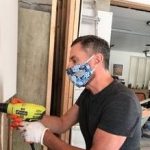MONKEYPOX UPDATE
From NJ Dept. of Health
The Biden Administration declared the Monkeypox outbreak a public health emergency on 8/4/22.
Transmission is mainly through person-to-person contact, mucous, saliva and face-to-face contact with an infected person; and from clothing and bedding of those infected. Symptoms include fever, headache, fatigue, body aches, and signature rash; first signs are rash, fever, and swollen lymph nodes.
NJ Dept. of Health is working with the CDC and local health departments, to quickly identify monkeypox cases and close contacts, provide treatment and vaccine, and further prevent the spread of disease.
For more information about the NJ outbreak and the State’s Vaccination Sites, visit here. For information on the national outbreak, visit here.
Civil Rights and “Monkeypox”: Frequently Asked Questions, click here.
—————————————————–
From White House Update* on Monkeypox Response – Conference Call – 10/3/22
(*Data as of 9/30/22)
• 25,613 reported cases
• 50% decrease from peak period (early August)
• Recent data shows reported cases of Monkeypox are down
-803,596 doses have been administered in the United States, with an increase in 2nd doses, and a decrease in 1st doses
-very preliminary results from 7/31-9/3 on vaccine performance have determined that with one dose the recipient is 14 times-less likely to contract Monkeypox. Therefore making the 2nd dose very important
-eligibility criteria has been loosened to reduce stigma. And to further reduce stigma, alternative injection sites will be made available (back and upper arm) therefore making the vaccine site less visible
-innovative vaccine programs are in place for easy community access. These include mobile units parked at strategic locations and events including Black Pride, Folsom Street Fair, Castro District, Ballroom venues, and nightclubs. Vaccines will also be made available at mobile HIV-prevention and treatment vans
-going forward, vaccine supply will not be an issue with 6.9 million vials currently ordered, and its arrival at vaccination sites expected to start this week
-the concentration of cases, as well as lower vaccination rates, have been reported in Black and Brown Communities. In an attempt to reduce inequity, grant programs across multiple agencies, have requested additional resources and funding for at-risk populations






